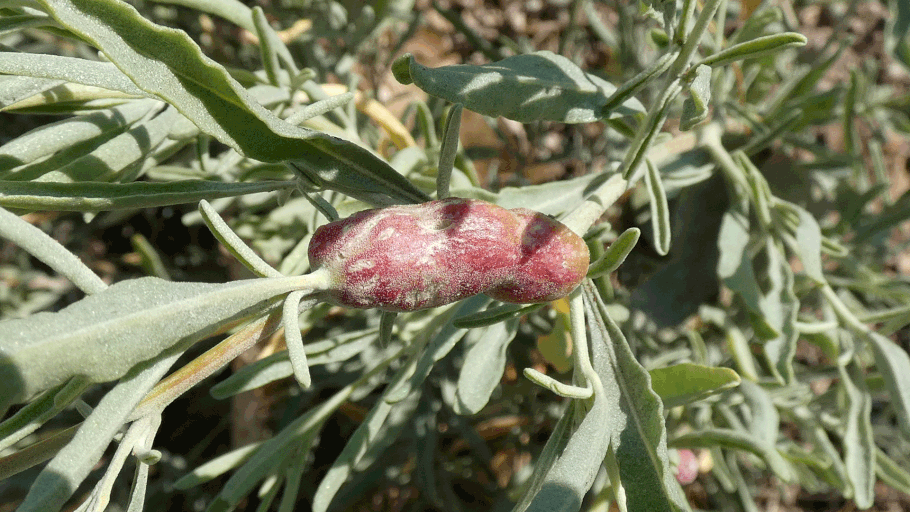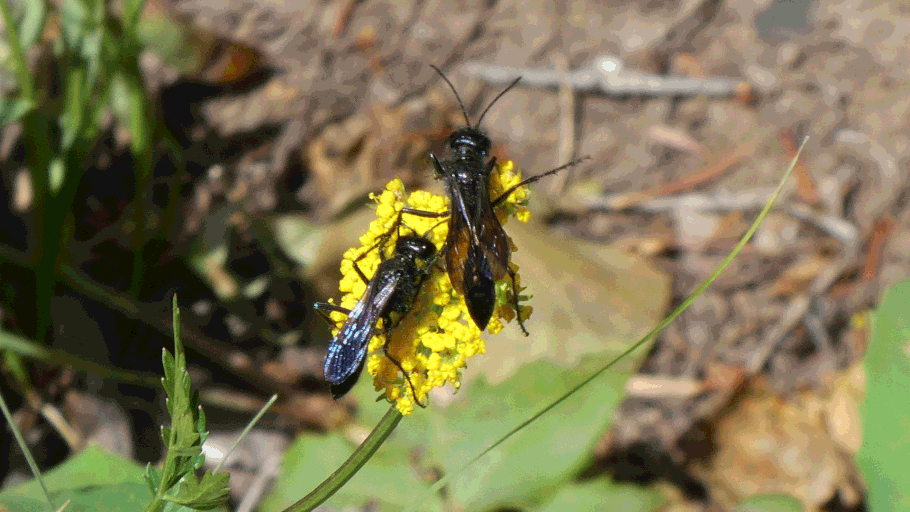A Few New Mexico Insects: Bees, Wasps, and Ants
(Hymenoptera)
Insects are shown alphabetically within selected taxonomic levels. If you see an error, please let me know via the contact tab at the top of the page.
Apoidea, Anthophila, Apidae: Urbane Digger Bee (Anthophora urbana)
My thanks to John Ascher (via BugGuide) for the ID.
Apoidea, Anthophila, Apidae: European Honeybee (Apis mellifera)
Apoidea, Anthophila, Apidae: Bumblebee (Bombus)
At least two species are shown here. The black and yellow bumblebees are what I've seen up to now in Albuquerque, but my two examples from the Sandia Mountains have a band of rusty orange on their abdomens. Each of those two color schemes is used by more than one species.
Apoidea, Anthophila, Apidae: Nevada Bumblebee (Bombus nevadensis)
This tan color scheme, including the black spot on the thorax, is distinctive enough to allow me to hazard a species ID. Nevada bumblebees with black heads are females (queens or workers).
Apoidea, Anthophila, Apidae: Carpenter Bee (Xylocopa)
Albuquerque's carpenter bees, which look like all-black bumblebees, are the insect that led me to start web pages for insects other than butterflies and moths. In April 2020 I found a carpenter bee dead on the sidewalk a block from my home. It showed no apparent damage. In October 2020 I found a second dead carpenter bee sitting on a rose of Sharon. I suspect that both fell victim to back yard chemical warfare. The ones I photographed in June 2023 were alive and well.
In July 2021 I learned that they aren't all black; I'll include pictures below. The folks at BugGuide identified the July 2021 bee as a male Xylocopa sonorina. In the August 2021 picture you can see the ocelli, or simple eyes, on top of the bee's head. These eyes allow the bee to navigate using the sun's position in the sky.
In August 2020 I did a brief blog on a carpenter bee I saw nectar robbing. One of the photos included here shows that same behavior.
Carpenter bees look scary but the males lack stingers and the females only sting if they feel they're being attacked. I have a carpenter bee "house" in my yard, and it's been used repeatedly. Consider adding a carpenter bee house to your yard!
Apoidea, Anthophila, Halictidae: Green Metallic Sweat Bee (Agapostemon)
Apoidea, Anthophila, Megachilidae: Woolcarder Bee (Anthidium maculosum)
My thanks to Bob Biagi (via Bugguide.net) for the ID.
Apoidea, Crabronidae: Eastern Cicada Killer (Sphecius speciosus)
These fearsome-looking wasps won't sting humans unless abused. Their venom is instead for paralyzing cicadas, which they then lug to their burrows. Once the Eastern cicada killer's eggs hatch, the larvae feed on the paralyzed cicadas. They're solitary wasps, so there's also no danger of them swarming you.
Apoidea, Sphecidae: Ammophila

As I ate lunch high in the Manzanitas, this wasp sipped from a drop of water on the rim of my water bottle—a recycled Gatorade bottle that retained the orange ring formerly attached to the cap. The adult wasps usually sip nectar from flowers, so the wasp may have flown to the plastic ring because of its bright color.
Apoidea, Sphecidae: Prionyx
Apoidea, Sphecidae: Yellow-Legged Mud-Dauber Wasp (Sceliphron caementarium)
In North America, also known as the black-and-yellow mud dauber. Individual females build small nests out of mud. The males may help, but mostly are there to protect the nest. The female stocks an individual cell of the nest with paralyzed spiders, then lays a single egg and seals the cell with mud. My photo shows the wasp on a large grass (carrizo?) leaf, along with numerous aphids. While there are tiny parasitoid wasps that use aphids as food for their young, this mud dauber probably is consuming the sugary "honeydew" excreted by the aphids. You can see a few of the local aphid species by clicking here.
Chalcidoidia, Eulophidae? Gall wasps

Cynipoidea, Cynipidae, Gall Wasps (Andricus?)

It's common to see these orange-red galls on oaks in the foothills and lower reaches of the Sandia Mountains. When there are multiple galls on the same plant, it looks like the oak has reddish fruit. A close look shows that these galls are attached to leaves not twigs.
Cynipoidea, Cynipidae, Gall Wasps: Disholcapis?
When this twig gall is live, it produces a sugary substance much desired by wood ants (genus Formica). In return, the ants may scare off would-be predators of the wasp larva within.
Cynipoidea, Cynipidae, Gall Wasps: Diplolepsis
Formicoidea, Formicidae: Ants
There are more than 13,000 known species of ants. They're all in one family, and that's the lowest taxonomic unit I can manage. Mostly I want to acknowledge their importance in the natural world, and to show how they fit in among the other insects. They may be tiny, but they survived the Cretaceous-Tertiary mass extinction and the dinosaurs didn't.
Ichneumonoidea, Ichneumonidae: Giant Ichneumonid Wasp (Megarhyssa)
The long "tail" on this female wasp is an ovipositor. The female paralyzes a horntail wasp grub deep inside a dead tree, and leaves an egg. When the egg hatches, that grub feasts on the paralyzed horntail wasp grub. You can see a picture of the victim species farther down on this page.
Pompiloidea, Mutillidae: Velvet Ant (Dasymutilla)
Males of this genus have wings. The females don't, and instead travel, seemingly constantly, as they search for ground-dwelling bees and wasps to serve as hosts for their young.
Pompiloidea, Pompilidae: Spider Wasp

Spider Wasps paralyze spiders to serve as food for their larvae. Despite this ferocious approach to child-rearing, adult Spider Wasps are vegans, living off nectar.
Pomplioidea, Pompilidae: Tarantula Hawk (Pepsis)
Tarantula Hawk wasps include two genera, Pepsis and Hemipepsis. I'm putting this one in the former based on the blue sheen. In 1989 one species of Tarantula Hawk, Pepsis formosa (now known as P. grossa), became the New Mexico state insect.
Scolioidea, Scoliidae (Scoliid Wasps)
This wasp with a black body, an orange abdomen, and blue wings is one of two different species, Scolia dubia haematodes and Triscolia ardens. It would take a close look at the wing structure to figure out which one.
Siricoidea, Siricidae: Banded Horntail (Urocerus gigas)

At first, this Banded Horntail looked like an especially large, especially nasty wasp. However, it sat docilely on a freshly felled tree as I approached with my camera. The yellow "stinger" is an ovipositor. To see a wasp species that preys on this one, check out the giant ichneumonid wasp earlier on this page.
Vespoidea, Vespidae: Potter Wasp (Eumeninae)






























































































